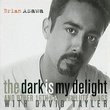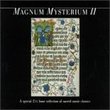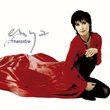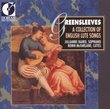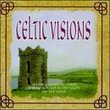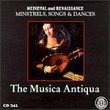| All Artists: Nicolas Grenon, Buxheimer Orgelbuch Anonymous, Guillaume Dufay, German Anonymous, Heinrich Finck, Heinrich Isaac, Jacques Barbireau, Adam von Fulda, Johannes Beham, Anonymous, Adam [1] Gilbert, Gregorian Chant, Christmas Traditional, Ciaramella, Mahan Esfahani Title: Sacred and Secular Music from Renaissance Germany Members Wishing: 0 Total Copies: 0 Label: Naxos Original Release Date: 1/1/2006 Re-Release Date: 1/17/2006 Genres: Special Interest, Pop, Classical Styles: Vocal Pop, Opera & Classical Vocal, Chamber Music, Forms & Genres, Ballads, Historical Periods, Classical (c.1770-1830), Early Music Number of Discs: 1 SwapaCD Credits: 1 UPCs: 747313262724, 747313262724 |
Search - Nicolas Grenon, Buxheimer Orgelbuch Anonymous, Guillaume Dufay :: Sacred and Secular Music from Renaissance Germany
 | Nicolas Grenon, Buxheimer Orgelbuch Anonymous, Guillaume Dufay Sacred and Secular Music from Renaissance Germany Genres: Special Interest, Pop, Classical |
Larger Image |
CD DetailsSimilarly Requested CDs
|
CD ReviewsStunning! Russ | Richmond, VA | 08/13/2006 (5 out of 5 stars) "I can only add to the praises this disc has already received. There are many gems within the Naxos Early Music catalogue, and this disc is certainly among them. This is an excellent and varied program of polyphonic works from Renaissance Germany. About half of the works on the program are from anonymous sources, but there are compositions by Heinrich Isaac (c.1450-1517) and Adam von Fulda (c.1445-1505) included as well. If you are not familiar with this type of music, you should know that the layering and combination of different melodic lines makes this music seem complex at first listen; however there is often an underlying simplicity to the melody that is both beautiful and haunting. The Ciaramella Instrumental and Vocal Ensemble is fantastic in this crystal clear recording. The ensemble itself consists of recorders, shawms, bagpipes, sackbuts, slide trumpets, an organ and sopranos. Their playing is clean, and the intonation is perfect as far as I can tell. The individual pieces are scored for varying instrumental forces, as to keep the listener engaged. The pieces for recorder ensemble are, of course, lovely (Track 9), while those for the brass instruments are regal (Track 24). But surprisingly, some of the more interesting selections are the highly contrapuntal organ pieces. Listen to the intricate passages within "Dies est laetitiae" (Track 25) or Isaac's "Fille, vous avez mal garde" (Track 10) for instance. The most stunning pieces on this program, however, are those that combine the instrumentalists with the sopranos. As an example, listen to the heavenly combination of recorders and sopranos in "Wer ich eyn falk" (Track 7). But best of all is Fulda's rendition of "Dies est laetitiae" (Track 26) in which the sopranos, in their highest register, soar above the dense contrapuntal texture provided by the shawms. Amazing. Given the orchestration, the comparison to the Piffaro ensemble will be inevitable here. The primary differences are the inclusion of an organ and sopranos within the Ciaramella ensemble, while the percussion that occasionally accompanies Piffaro is not to be found here. Both ensembles are excellent, but perhaps the sound of the Ciaramella ensemble is more blended and clean, while the Piffaro ensemble is more full-bodied. Piffaro has previously released a disc of German Renaissance music called "Stadtpfeiffer" which features the compositions of Ludwig Senfl, among others. As there is no overlap, that disc would be an excellent companion to this one. My one reservation about this release, and this is a minor one, is when the sound is so clear you run the risk of picking up the mechanism clicking of early music instruments. Indeed this does happen in certain of the tracks (ex: Track 16), but this wasn't enough to distract me from this captivating music. This release is highly recommended to early music fans and to those whom are even remotely curious. I eagerly anticipate this ensemble's next release! 65:34" Powerful and Magical...Ciaramella transports you to a beauti Guy Lusignan | 08/13/2006 (5 out of 5 stars) "Very infrequently does a disk come along that is so well done. Ciaramella's first release on the Naxos label (hopefully the first of many) is packed full of goodies for the intellect, the soul, and surely the ear. Pure sounds delight the listener, as intonation is incredible. It seems as if time stops when these musicians decide to cadence. The choice of instrumental timbres is varied but not without reason. Thankfully, Adam and Rotem Gilbert (directors) have eschewed the 'David Monroe' idea of a recording where there has to be a different sound every two and a half minutes. The sound combinations that Ciaramella does achieve range from the effervescent (Sancta Maria, tr. 17) to thick and juicy (Mein Hertz, tr. 12). The ensemble is constructed around the core of shawms (renaissance oboes), sackbuts (renaissance trombones), recorders, bagpipes, and organ, and is only enhanced by the sopranos, be they boys or beautiful women floating from the ether. Regardless, they have fixed their voices triumphantly upon this recording. Of course, this recording would not be complete without changes in pace and texure provided by the excellent organist, Mahan Esfahani. Particular 'genius' moments on this recording abound, but some worth mentioning are: tr. 13, "Gespiele," where Ciaramella seems to be channeling Sequentia, in an amazing performance with sopranos and bagpipes (yes, really!); tr. 1, "Nova Vobis Gaudia," where shawms chase each other accompanied by a brilliantly-played slide trumpet. From the outset, the piece defies sonic expectation, and ends quite expectantly; trs. 8-9, from "Missa Je ne fay plus." No doubt this is vocal music transliterated by recorder consort, but it is accomplished so thoughtfully and masterfully, that it could have little equal. There are many recorder consorts with even more recordings out there, but the seamless blend of this ensemble trumps them all, showing what recorders must have truly sounded like in the 15th century. Finally, tr. 26, "Dies est laetitiae" is a tour de force of vocals, shawms, sackbuts, and seems constructed, at times, of sheer bravado. Surely this ensemble was reincarnated, as is, from the Renaissance. Here's to looking forward to the next recording and all the magic that will issue forth from Ciaramella in the future... " An excellent new player in world of Old Music. B. Marold | Bethlehem, PA United States | 07/25/2006 (5 out of 5 stars) "'Sacred and Secular Music from Renaissance Germany' by Ciaramella Instrumental and Vocal Ensemble was recommended to me by D. Millikan, who suggested it based on my reviews of Piffaro's recordings. And, I am happy to say that Ciaramella is easily within the same league as Piffaro AND they do a wider range of music, including a lot of choral, especially female voice choral music. In this recording, they also cover a part of Europe which Piffaro and other Early Music specialists (except for the Anonymous 4) do not seem to visit very often.
As I no longer visit brick and mortar mega music stores anymore, I was especially happy to see that this recording was on the budget Naxos label, as I was not even sure they were still in business. The recording shows no signs of being done on the cheap, and easily matches the value from the big label recordings on Deutsche Grammaphone or pricy Hyperion. There is just enough of that church sanctuary ambience and the instrumentalists seem to do an excellent job of improvising on the skimpy clues to the melodies available from old sources. This is a very nice find for those who love old music." |


